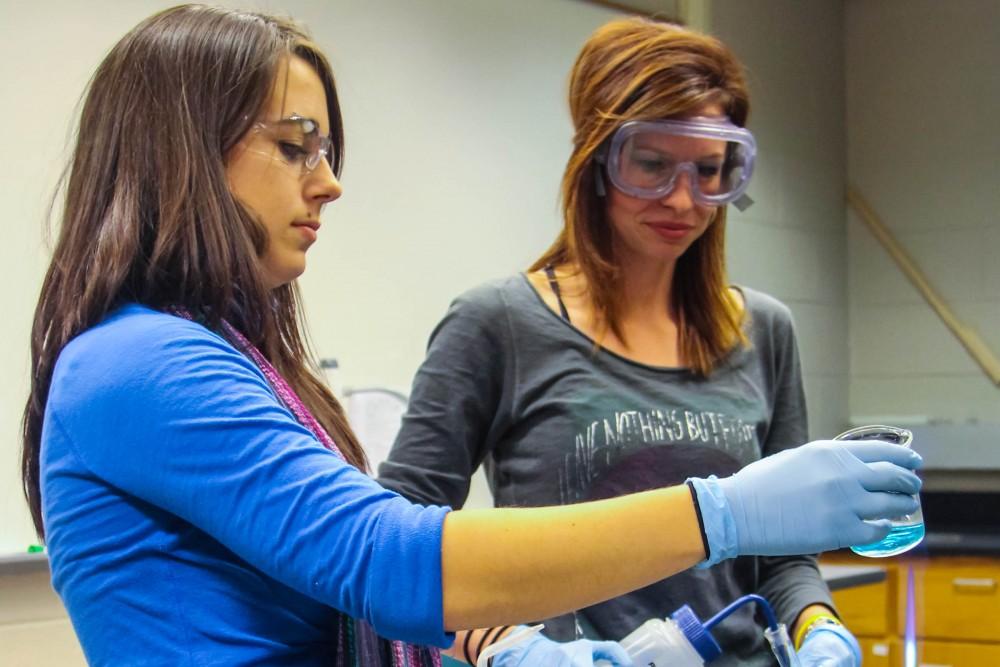Changes brewing for chemistry department

GVL / Jessica Hollenbeck Chemistry Students Erin Harbour and Kristen Wellman work in the Chemistry Lab.
Nov 28, 2012
A change may soon be in order for Grand Valley State University’s chemistry department, which has been developing a proposal that would allow students to drop the now mandatory discussion portion of their chemistry classes.
The dialogue behind the decision began last year as the department looked to stand out against other programs without the additional help of state funding, said Todd Carlson, chair of the chemistry department at GVSU.
“Anything we can do to make ourselves more competitive, flexible and fiscally sound will help the university continue to thrive,” Carlson said. “Many schools around the country have had to take drastic measures just to survive, such as cutting programs, departments, majors and professors, (but) GVSU has been spared these severe measures due to proactive planning.”
Carlson said the reason for the discussion section in chemistry courses was mainly to encourage the student-professor relationship that can sometimes be lost in a large lecture atmosphere.
“Our large service classes at GVSU have used this structure as far as anyone can remember,” he said. “Historically, large research universities, such as U of M or MSU, have had even larger lecture sections, and then used discussion sections taught by graduate student teaching assistants.”
While the lecture and discussion combination has allowed lecture professors to lead the discussions, amplifying the student and professor relationship, the issue of time has begun to pose a problem.
“This model is very time intensive for the students and the professor, and tends to lock us into a traditional method of instruction, the expository lecture, at least for the bulk of the class time,” Carlson said.
He added that the issue is complex and the department spent the majority of last year discussing possible options. Carlson said no definite decisions have been made, but there will soon be a proposed restructure to deal mainly with the issues facing the professors’ and students’ time.
“It is likely that we will in the future rely less on the traditional large lecture/discussion model that we have always used and move toward a system that uses somewhat smaller class sizes with no discussions,” he said.
The class size reduction will help professors teach the material better without having the additional discussion section.
Along with the burden on professors’ time, Carlson said the department also thought about the demands on student time. In current low-level chemistry courses, students spend an hour in class each week without receiving credit.
“Making the student pay more tuition and take more credits would be contradictory to our goal of streamlining the curriculum, so we are in the process of exploring ways to update our curriculum to maximize student outcomes,” Carlson said.
While class scheduling for the next school year won’t change, Carlson said that if classes move in the new direction, the change will be beneficial to students.
“By making the class sizes a bit smaller, we will offer more sections which will also help to make scheduling easier,” he said.
Current scheduling for chemistry courses aren’t as flexible.
“Lecture halls are one large space, discussions require several rooms for smaller parts of the lecture group, and finally, labs require a specialized room with the necessary chemistry materials at hand,” said Mary Schutten from the College of Liberal Arts and Sciences.
While changes may be on the way for chemistry students, Neil MacDonald, chair of the biology department, confirmed that his branch of science will not make similar changes.
For more information about the science courses at GVSU, find the specific program at www.gvsu.edu/clas.
[email protected]

























